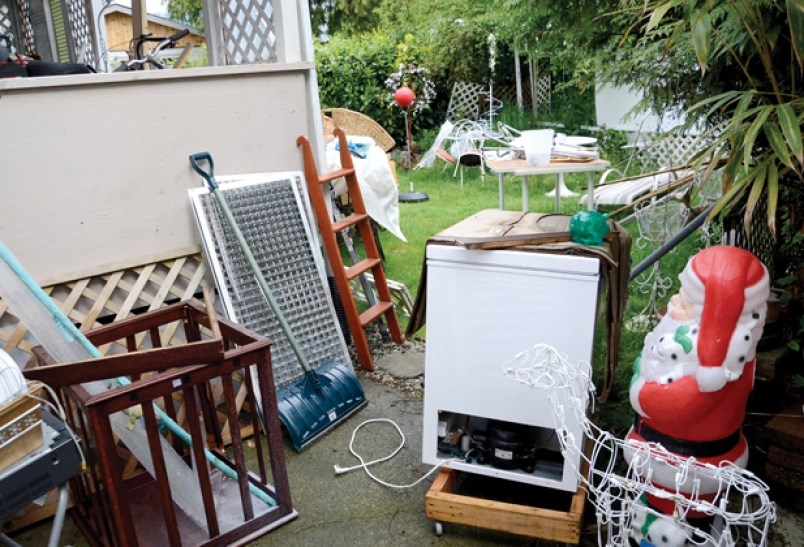For the past month, I’ve watched a hoarder in my neighbourhood being slowly and excruciatingly extracted from his home. For several weeks, it looked like the house was barfing – out of both ends. The entire front and back yards were covered in stuff: dusty records, antique electronics, broken gadgets, bottles, lamps, paintings, faded newspapers, and those massive stuffed animals that bangers somehow win at the PNE.
It was the hoarder’s treasures, collected over a lifetime. But to most everybody else – including his family members, who had decided to intervene – it was a staggering amount of junk. By invitation, I went through the records. If you’re not into the Pointer Sisters or John Denver, there wasn’t much there.
At least four full-sized dumpsters were brought in to remove the accumulated contents of the home, which had recently been sold. According to one worker, the house was stacked floor-to-ceiling in every room, hall and stairway. Narrow trails wound through the clutter. From the outside looking in, it was a sad spectacle. The hoarder had lived there his entire life.
According to a city spokesperson, hoarding is “not a big issue” in Vancouver, but is something officials deal with systematically on a regular basis. Several years ago, Vancouver became the first city in North America to form something called the Hoarding Action Response Team (HART), to deal with such matters delicately. First, the hoarding team accesses the situation, followed by the fire department and, if need be, Coastal Health. The spokesperson was quick to note that the team considers hoarding a mental-health issue that stems from fear of letting go.
Kristian Olsen is a Vancouver-based television producer who travelled all over North America while working on a show called Confessions: Animal Hoarding, which aired on Animal Planet. He doesn’t mince words when recalling the experience. “Most of the hoarders we encountered were obsessive-compulsive, paranoid, drugged out, depressed, nose-blind hypochondriacs, who tended to live alone with massive amounts of animals. None of them realized their behaviour was abnormal.
“Once, we helped rescue an elderly woman from over 200 feral dogs on her property in the California desert,” he continues. “The dogs had completely destroyed her home and she was sleeping in her bathtub. Another time, I stepped into a rabbit hoarder’s trailer in Oklahoma and wondered why my head was so close to the ceiling. That’s when I realized I was standing on a solid foot of rabbit shit.”
Animals weren’t the issue with the hoarder in my neighbourhood, unless you count the rats. “They were everywhere”, says a neighbour, who wishes to remain nameless. “Living near this situation for several years was as bad as you can imagine. In the backyard alone, there were barrels of old batteries, dozens of half-empty paint cans, tons of random pieces of furniture, and rats. It was like a toxic waste dump.”
The city spokesperson told me that while hoarding is not illegal, an official intervention occurs if fire hazard bylaws are broken (such as blocked access to doors or windows) or if the safety of any of the residents is a concern. If a clean-out is deemed necessary, the owner can be on the hook for the cost. You can take a test on the city’s website to determine if you’re a hoarder, or living near one.
The sheer amount of stuff pulled out of the house down the street scared me silly, and had me reassessing the accumulation of stuff in my own home. If you feel under the weight of a collection gone crazy, or think there’s a problem in your building or neighbourhood, HART can help: It’s time to call 3-1-1.
According to his family members, my hoarder neighbour has been moved to a hotel. I can only hope he feels liberated from his lifetime’s collection, but I’m not so sure.
Recommended reading: The Life-Changing Magic of Tidying Up by Marie Kondō, and Stuff: Compulsive Hoarding and the Meaning of Things by Gail Steketee and Randy Frot.



